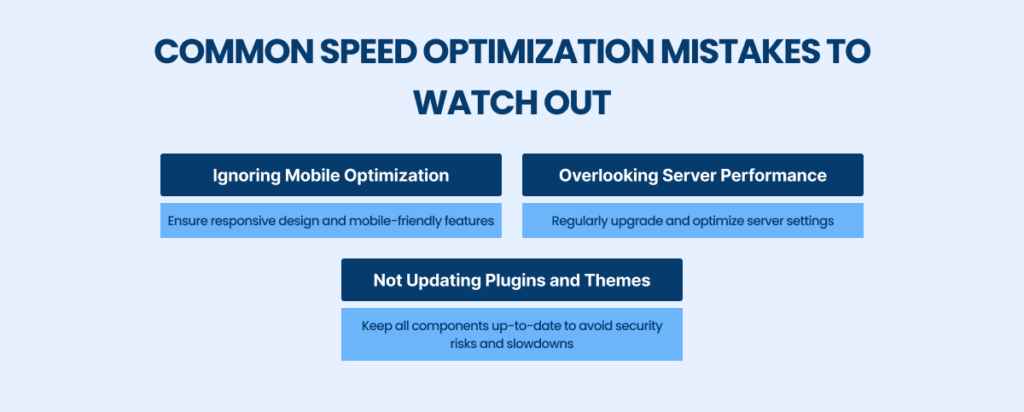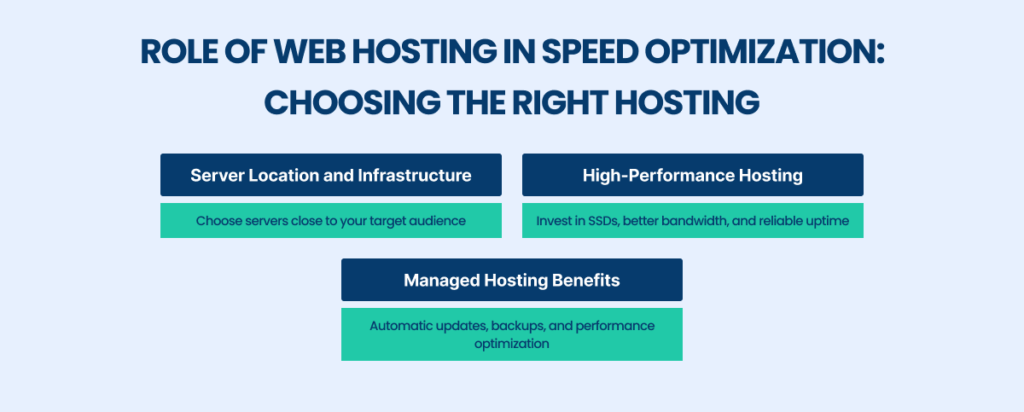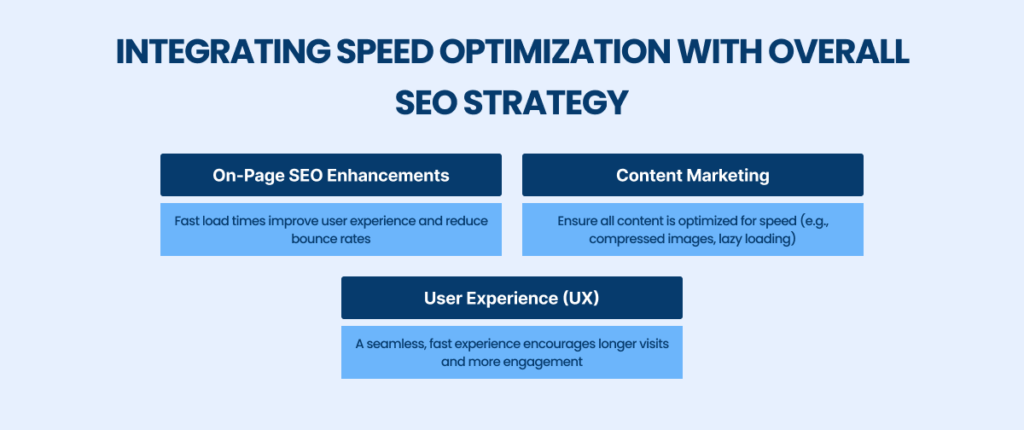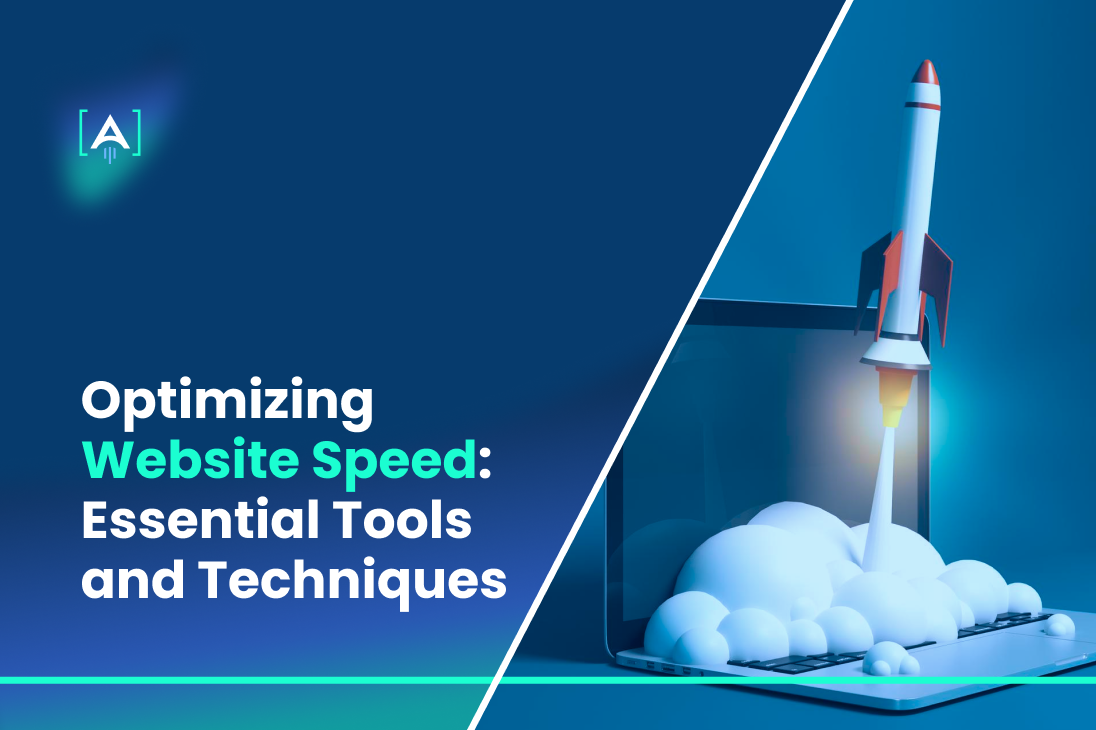As a business owner, you know that every second counts.
A slow website can drive customers away and hurt your bottom line. Website speed optimization is essential to keeping visitors engaged and boosting your SEO rankings.
Simple optimizations like compressing images, minifying CSS and JavaScript, and implementing smart caching strategies can make your site faster and more efficient.
Don’t let slow load times hold your business back.
Invest in a top-notch SEO Agency and see the difference in user satisfaction, engagement, and conversions.
Ready to accelerate your online performance? This guide will equip you with the essential tools and strategies to transform your website into a high-speed revenue generator.
Understanding the Importance of Website Speed
In the digital age, website speed optimization is no longer a luxury; it’s a necessity.
As a business owner, you must recognize that a slow website can chase away potential customers and negatively impact your bottom line.
Studies showcase that a one-second delay in page load time can reduce conversions by 7%.
Moreover, 53% of mobile users abandon sites that take longer than three seconds to load.
Website speed optimization directly influences user experience, SEO rankings, and conversion rates. When your site loads quickly, visitors are likelier to stay, take a look at, and engage with your content.
This positive interaction signals to search engines like Google that your site is valuable, boosting your rankings. Google’s emphasis on speed is evident in its Core Web Vitals metrics, now critical factors in search rankings.
Advanced SEO techniques like AI in SEO revolutionize how businesses approach website speed optimization.
Schema markup SEO and other SEO techniques can significantly enhance your site’s performance.
SGE also highlights the growing importance of speed.
Partnering with a website speed optimization service can ensure your site meets and exceeds modern performance standards.
This service often includes EEAT Google guidelines and SEO mobile optimization to keep you ahead of the competition.
Investing in website speed optimization is crucial for staying relevant in today’s fast-paced digital world.
By focusing on speed, you can enhance user experience, improve SEO rankings, and drive more conversions, ultimately boosting your business’s success.
Tools for Measuring Website Speed
Here are some powerful tools to help you get started:
- Google PageSpeed Insights: This tool provides comprehensive insights into your website performance, offering suggestions to improve desktop and mobile speed. It also aligns with EEAT Google guidelines, ensuring your site meets the latest standards in search engine rankings.
- GTmetrix: This tool analyzes your website’s speed and performance with detailed reports, including metrics on page load time, total page size, and the number of requests. It’s great for advanced SEO and technical SEO audits.
- Pingdom Tools: A user-friendly tool that tests your website speed from multiple locations worldwide, providing insights into international SEO and how your site performs globally.
- WebPageTest: This tool offers advanced testing features such as video capture, content blocking, and customizable test settings. It’s perfect for programmatic SEO and understanding the impact of various elements on your site’s speed.
- Lighthouse: An open-source tool from Google, Lighthouse runs various audits on your web pages, including performance, accessibility, and SEO. It’s beneficial for schema markup SEO and natural language processing SEO.
- YSlow: This Yahoo tool analyzes web pages and comes up with ways to improve their performance based on a set of rules for high-performance web pages. It’s beneficial for both website and WordPress speed optimization.
- Chrome DevTools: Built into the Chrome browser, DevTools offers a suite of performance auditing tools. Use it to identify and fix issues that slow down your website, contributing to effective SEO automation and future SEO trends.
Utilizing these tools can effectively measure and enhance your website performance, ensuring it meets the criteria for website speed optimization services.
This process is essential for maintaining high search engine rankings and delivering a coherent user experience.
Investing in professional website speed optimization services, including WordPress speed optimization services, can further refine your site’s performance.
You will feel a sense of achievement as you watch your site thrive with faster load times, improved search rankings, and higher conversions.
Check Our Ultimate SEO Glossary
Essential Techniques to Optimize Website Speed
When you optimize your website speed it enhances user experience and improves search engine rankings.
Here are some critical techniques to boost your site’s performance:
Image Optimization
Compress and rescale images to reduce load time without compromising quality. Tools like TinyPNG and ImageOptim can be very effective.
Minify CSS and JavaScript Files
Removing unnecessary characters and spaces from your CSS and JavaScript files can significantly decrease their size and improve load times.
Use a Content Delivery Network (CDN)
A CDN shares your website’s content across multiple servers worldwide, decreasing the distance data needs to travel and speeding up load times for users globally.
Leverage Browser Caching
Store frequently accessed data locally in the user’s browser. This technique reduces the need to load resources from the server any time a user visits your site.
Enable Gzip Compression
Compress your web files before sending them to the browser. This reduces file sizes and speeds up the delivery of your website content.
Optimize Your Server
Ensure your server is configured for optimal performance. Upgrading to a better hosting plan or switching to a faster server can make a big difference.
Reduce HTTP Requests
Limit the number of elements on each page. Combining files (e.g., multiple CSS files into one) and using inline images can help reduce HTTP requests.
Implement Lazy Loading
Load images and videos just when they are about to enter the viewport. This technique saves bandwidth and improves initial load times.
Use Google PageSpeed Insights
Check your site regularly with Google PageSpeed Insights. This tool provides valuable suggestions for improving its speed and performance.
Monitor Core Web Vitals Metrics
Pay attention to Core Web Vitals metrics in Google Search Console. These metrics are crucial indicators of your website’s performance and user experience.
Optimize for Mobile
Using responsive design ensures your site is mobile-friendly. Mobile optimization is critical for improving smartphone and tablet load times and overall user experience.
Implement Schema Markup
Adding structured data to your pages can help improve your site’s visibility and load time by helping search engines better understand your content.
Conduct Regular Speed Tests
Use speed test tools like GTmetrix, Pingdom, and WebPageTest to regularly assess your site’s performance and identify areas for improvement.
Applying these techniques can significantly improve your website’s load time and overall performance.
For WordPress websites, leveraging specific plugins and optimizations tailored to the platform can further enhance speed and efficiency.
Monitor your site with speed test tools to ensure it remains fast and user-friendly.

Advanced Techniques for Website Speed Optimization
When basic techniques aren’t enough, advanced strategies for website speed optimization can further enhance your site’s performance and user experience.
These methods address more profound issues and provide robust solutions for improving page and load speeds.
Reduce Time to First Byte (TTFB)
Time to First Byte (TTFB) is a critical metric in site speed optimization. A faster TTFB means your server responds quickly to requests, significantly impacting overall load speed. Ensure your server is optimized, and consider using a high-performance hosting provider.
Implement HTTP/2 Protocol
The HTTP/2 protocol enhances web page performance through multiplexing, header compression, and prioritization. Letting multiple requests to be sent over a single connection reduces slow load times and improves page speed.
Use a Quality WordPress Plugin
Specific plugins can streamline various speed optimization tasks for WordPress websites. Plugins like WP Rocket and W3 Total Cache can handle caching, minification, and other critical optimizations, helping to improve site speed.
Optimize Critical Rendering Path
Minimize the amount of render-blocking JavaScript and CSS on your web page. This ensures that the content is displayed to the user as quickly as possible, enhancing the perception of a fast load speed.
Apply Server-Side Rendering (SSR)
SSR can improve the performance of dynamic web pages by generating the HTML on the server rather than the client. This technique reduces the load time, especially for complex and dynamic content.
Monitor with Real User Monitoring (RUM)
RUM tools track user interactions with your website, providing insights into its performance under real-world conditions. This data is invaluable for identifying issues and opportunities for improving site speed.
Implementing advanced caching techniques such as Redis or Memcached can significantly decrease the load on your server and improve response times, leading to faster web page load speeds.
Browser caching
Browser caching is a crucial technique for enhancing website performance and user experience by storing images, CSS, and JavaScript files on a user’s local device. When a user visits a website, these resources are downloaded and saved in the browser’s cache.
On subsequent visits, the browser can recover these files from the cache rather than downloading them again, significantly reducing load times. This speeds up the browsing experience for users and reduces the bandwidth and load on the web server.
Implementing browser caching involves setting cache-control headers or expiration dates that define how long these resources should be cached, ensuring that users receive the most up-to-date content while minimizing unnecessary data transfers.
Regular Technical SEO Audits
Conduct comprehensive technical SEO audits to identify and fix issues affecting your site speed. These audits should include checks for broken links, redundant scripts, and large file sizes.
Optimize Database Performance
Optimizing your Database can reduce load times for dynamic websites. To improve performance, regularly clean up your Database, optimize queries, and consider using a Database caching mechanism.
Engage Professional Web Developers
Sometimes, the complexity of site speed optimization requires professional expertise. Hiring experienced web developers can ensure that advanced techniques are correctly implemented and maintained.
By incorporating these advanced techniques for website speed optimization, you can ensure your site meets and exceeds performance expectations. This leads to a better user experience, higher search engine rankings, and more tremendous success for your online presence.
Keep striving for excellence in site speed, and leverage the best tools and strategies to maintain a fast, efficient website.

Monitoring and Maintenance
Constant monitoring and maintenance are essential to sustain optimal website performance.
Here are critical practices to ensure your site remains fast and efficient:
- Regular Performance Audits: Conduct frequent performance audits to identify and fix page speed optimization issues. Use tools like Google PageSpeed Insights and GTmetrix to get comprehensive reports on your website performance.
- Use Speed Test Tools: Regularly test your site using speed test tools like Pingdom and WebPageTest. These tools provide detailed insights into your site’s load time and help you identify areas for improvement.
- Update Plugins and Themes: Ensure that all plugins and themes are up-to-date for WordPress websites. Old plugins can slow down your site and cause security vulnerabilities.
- Check Server Performance: Review your server’s performance regularly. Optimize server settings and consider upgrading your hosting plan if you notice slow site loads.
- Optimize Database Regularly: Clean and optimize your Database regularly to maintain fast query responses. This is particularly important for dynamic websites with large databases.
- Monitor User Feedback: Pay attention to user feedback regarding site speed. Real user insights can help identify issues that might need to be apparent in standard speed tests.
- Scheduled Maintenance: Set up a regular maintenance schedule to review and optimize all aspects of your website. This dynamic approach ensures that your site remains fast and efficient over time.
By following these monitoring and maintenance practices, you can ensure continuous website speed optimization. This will provide a consistently fast and efficient user experience, which ultimately boosts your search engine rankings and overall website performance.

Supercharge Your Site with [A] Growth Agency!
Website speed optimization is essential for delivering a top-notch user experience, improving your search engine rankings, and driving higher conversion rates.
You can make sure your website performs at its best by implementing the essential techniques and maintaining regular monitoring.
Partnering with growth experts is crucial for businesses looking to improve their website performance.
At Azarian Growth Agency, we specialize in comprehensive SEO services to optimize your website speed and enhance your online presence.
Ready to turbocharge your website?
Contact Azarian Growth Agency today, and let our professional team help you achieve exceptional results with tailored website speed optimization solutions.
Join us and experience the difference of working with a dedicated SEO agency committed to your business’s success.
Let’s make your website lightning-fast and your business unstoppable!
Get Your Free Marketing Plan now!

